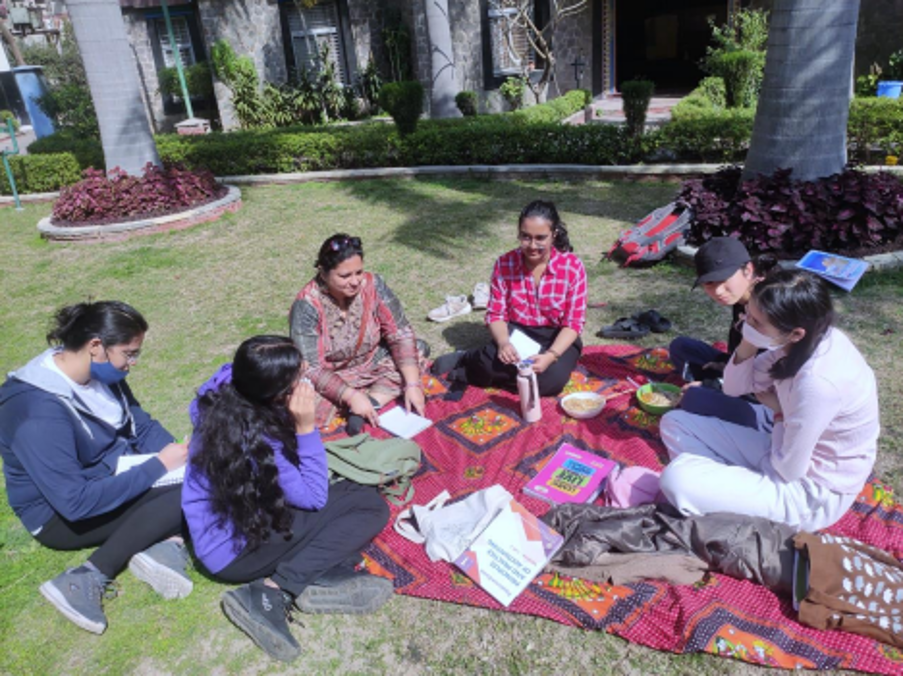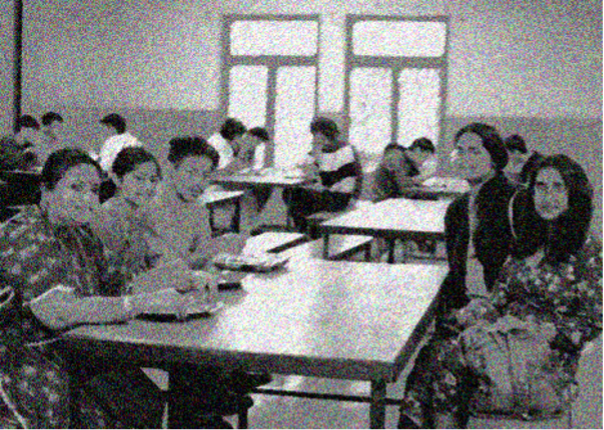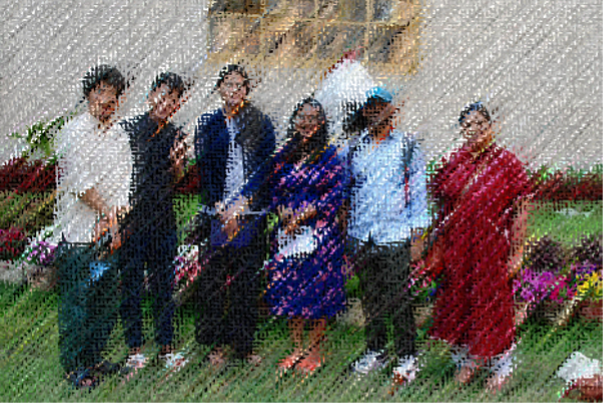Researching Tibetan youth in Delhi
By Kanchan Gandhi, Jessica James, Kanchandeep, Katyayni Mishra, Rohit Raj
This blog post is collaboratively written by Dr Kanchan Gandhi and her students from the urban studies program at Dr B.R. Ambedkar University, Delhi. The voice of each author is identified by their names preceding their writing.
Dr. Kanchan Gandhi:
In January 2023 I was teaching a course entitled: “Understanding the Urban”. As a part of this course, we read Sara Smith’s paper “Politics, pleasure and difference in the Intimate city: Himalayan students remake the future” in which she discusses how Ladakhi youth from the higher Himalayas travel to metropolitan cities like Delhi, Chandigarh and Jammu for University education where they simultaneously experience contradictory feelings of liberation and struggle as they adapt to these big cities. Taking cue from this reading, I suggested to my students that we do a qualitative study of Tibetan youth and their experiences in Delhi. We agreed to co-write this blog piece on the experiences of Tibetan refugee youth in Delhi and their aspirations for the future.
The broad themes that the students worked on were as follows: Rohit examined the question of the trans-Himalayan identity and how Tibetans experience urban space in Delhi. Jessica worked on the “notion of home”. Kanchandeep looked at the educational aspirations and Katyayni explored their career aspirations. The paragraphs below provide excerpts from essays that my students wrote on these themes.
My students were keen to undertake this study as it gave them an opportunity to interact with people of their own age group, yet from very different ethnic and regional backgrounds. As a first step to the study, we decided to visit “Majnu ka Tila” or New Aruna Nagar, an “unauthorized” yet vibrant and colourful neighbourhood which is also viewed as a “Tibetan enclave” by many in Delhi. This space was allocated to the Tibetan community in the year 1960 when the first wave of Tibetan refugees arrived in India after the Chinese occupied Tibet in 1959.
Upon our visit we learnt that most Tibetans owned the shops and commercial establishments in the area but had sublet these out to people from the North Eastern states to run the stores while they lived and travelled elsewhere for work. For most North Indians the difference between Tibetans, North Easterners and Ladakhi people is blurred because of their “similar” facial features. However, for the Tibetans, their refugee status makes them feel like a “guest” on Indian soil (see Falcone and Wangchuk, 2008). Most of them have practiced their businesses here, paid taxes, owned properties but do not have citizenship rights.
We were informed by the local Resident Welfare Association that we should visit the Tibetan Children’s Village (TCV) youth hostel located in Rohini to meet Tibetan youth as it was hard to find them in Majnu ka Tila.

Interviewing young people: A view from the Tibetan (TCV) hostel in Rohini, Delhi
We visited the Tibetan youth hostel in Rohini in February, 2023. We interviewed the administrator of the hostel Dr Tenzin Thupten who gave us an overview of the Tibetan diaspora in India and the Tibetan government in exile located in Dharamshala, Himachal Pradesh, India. He also told us that although the hostel was meant mostly for Tibetan youth, they did open it up to the students from Ladakh and the North Eastern states of India when rooms were not filled up. Next, we interacted with Tibetan youth in the hostel and my students conducted in-depth interviews in relation to their respective essay topics, excerpts of which are provided below.
My main learning from these interactions was that the Tibetan youth had faced very hard circumstances as most had crossed borders in very precarious conditions accompanied by agents and often without their parents. Their first stop was mostly Nepal where they spent a few weeks to a few months before finally embarking to India where they first arrived in Dharamshala. In Dharamshala, they were admitted to residential schools where they were taken care of by adult care-takers and grew up along with other young Tibetan children who had been separated from their parents at a young age of below 10 years. The striking thing I found among the youth I interviewed was that they were strongly embedded in their religious and cultural identity which provided them an emotional anchoring. They were committed to the cause of Tibetan liberation despite not having visited Tibet after fleeing from there as children. It had been a tough journey which had made them vulnerable and resilient simultaneously. Most of them were unable to communicate with their parents back in Tibet due to increased surveillance by Chinese authorities. They voluntarily refrained from calling their families because they feared for them. Also, since India had banned the Chinese app called, We-Chat in the year 2020, it had become almost impossible for these youngsters to maintain contact with their families back in Tibet.

Tibetan citizenship in India has been a contentious issue. Several scholars have already documented the barriers in obtaining citizenship for Tibetans in India (cf. Conway, 1975; Falcone and Wangchuk, 2008; Bentz, 2012; Shani, 2013; Thapan, 2016). We read some of these papers before we began our fieldwork. Given the fact that it is very hard for the Tibetan community to get Indian citizenship, most of the young Tibetans aspire to immigrate to the Western world – either USA, Canada or European countries. During our interactions we found a strong desire among the youth to contribute to the cause of Tibetan liberation from Chinese occupation.
This blogpost now turns to highlight the reflections of my students.

The Notion of Home – Excerpt from Jessica
In the hostel, many students were hesitant to talk. There was an incident a few years ago, when Chinese spies came and tried to get information about them. Maybe they have this fear of getting recorded or being used in some sort of political ways that could go against them and have an impact on their lives in India. The students expressed that if they were not living in this hostel, they wouldn’t feel at home. The sense of belongingness that they experience in the hostel makes them feel safe. They said that for government jobs in India, you need Indian citizenship and the Tibetans as they don’t have it, cannot apply for jobs here. They have very limited options here. So, they feel like going to some other countries, preferably US, Canada and Germany which could provide them with residency status as well as better job opportunities.
As they have migrated here because they had no other choice, they will always feel like being in someone else’s home or living in a foreign land. They lack the sense of belongingness here.
One interlocutor, a PhD scholar in the University of Delhi aged 28, who volunteered in a drug rehabilitation centre in Dharamshala informed me that: “Deep down, these children also wanted to go back in the holidays but they couldn’t. They were left out, they lacked mother’s and father’s love and affection at every stage of their lives. Without proper love and nurturing, children at the age of 13-16 get involved in smoking, consuming drugs and drinking.” Coupled with these hardships is the lack of citizenship rights which limits the educational and employment options for the youth causing further distress among them.
Educational Aspirations – Excerpt from Kanchandeep
Talking to the students who are in various fields of study, some are doing Bachelor’s, some Master’s in conventional fields like Political Science, History, STEM subjects while there are students who are taking coaching for various exams, doing hotel management, fashion designing, etc, one can get a sense of responsibility among them to take care of themselves and how to give back to their families or even their communities. Students who were born in Tibet who came to India when they were not even teens, away from their family, the community in India which took care of them ever since became their family, it is understood why they are so thankful to that community and want to make something of their life, so that they could give back to that community. As most of the students have been used to being away from their families since their schooling, they mature before their age and learn to take care of themselves. The third-generation Tibetan youth does not see themselves going back to Tibet, even if the country does get independence as they don’t see that their capabilities would be met there. With the zeal to do something in life, to better themselves and getting the exposure they need by coming to a cosmopolitan city like Delhi, although if many of the students don’t want to settle here, still it gives a means to see their life in a different perspective and prepare for their future.
Career Aspirations – an excerpt from Katyayani
In the youth hostel I met ‘T’ who said that she wanted to become financially stable in life to take the burden off her mother’s shoulders. Her mother, she said, had migrated to India from Tibet in the 1990’s with help from her grandparents and set up different shops in Dharamshala. They used to travel to different parts of north India while growing up selling woollen clothes. Seeing her mother become a successful business owner of different commodities, paying her own taxes from time to time, managing every expense of bringing up her two kids had given T a great amount of inspiration to work hard in life. She aims to get an MBA degree after working in the corporate sector for a while. She feels that her experience along with having a double masters will enhance her chances of settling down in Canada along with her mother.
“Canada is a friendly country and welcoming to people from all parts of the world. It provides good education and career opportunities along with a solid healthcare plan for all its citizens”. A lot of Tibetans feel that migrating to different countries is better as that way they will be going around representing that even under restrictions imposed by China, Tibetans are still finding ways to progress ahead in life and cannot be stopped. She also plans on doing something for her country but she can do so only after she has become something on her own only after which she will be taken seriously by her country’s people. “To start something, you yourself need to be somewhere in life”, she reflected.

Discussion
This short fieldwork and essay writing exercise was a revelation for me and my students in many ways. It gave us an opportunity to document how a “minority group” having a “guest status” in India experiences the city and its spaces. It was quite clear that the Tibetans felt most comfortable living in their own neighbourhoods and confined spaces – like Majnu ka Tila and their hostel. Although Delhi is a large cosmopolitan city, the Ladakhi and Tibetan youth in the hostel said that they had experienced discriminatory remarks from the “mainstream Indians” at various instances. Further, living in confined spaces gave them an opportunity to practice their religious and cultural rituals and practices in a freer way. Most of the youth interviewed were clear that Delhi was a stepping stone for them and not a place to “settle down”. They were spending their time waiting for the next milestone and hoping for a better future in their lives.
